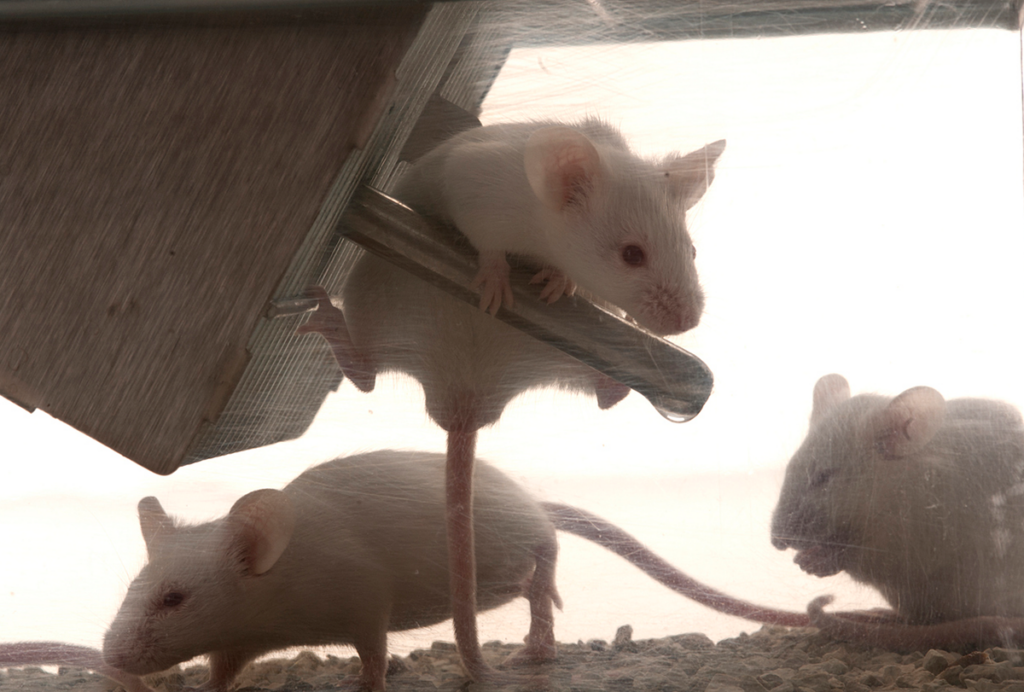DNA flips and swaps ‘scramble’ genes linked to autism
Most methods used to scan the genome are missing thousands of complex variants that alter DNA structure and may contribute to autism risk.
Most methods used to scan the genome are missing thousands of complex variants that alter DNA structure and may contribute to autism risk. That’s the upshot of a study published 23 March in the American Journal of Human Genetics1.
Analyzing whole-genome sequences, researchers found that any given individual carries more than 5,000 variants that delete, duplicate, invert, insert or otherwise scramble segments of DNA. Traditional methods miss a large proportion of these variants, the researchers say.
“Whole-genome sequencing is another turning point, another game-changer in our ability to capture the many flavors of rare variation,” says lead investigator Jonathan Sebat, associate professor of cellular and molecular biology at the University of California, San Diego.
People with autism tend to have just as many of these variants as controls do, even when the variants arise spontaneously. However the spontaneous, or de novo, variants are more likely to affect genes in people with autism than in controls, the study found. This suggests that the variants are important players in the genetic risk for autism.
Sebat and his colleagues reported in 2007 that people with autism have more large duplications or deletions — on the order of 20,000 bases — in their DNA than controls do. And in a study published last year, another team detected large flips and swaps in the genome in roughly one-quarter of 259 people with autism (they did not report the prevalence of these variants in controls). The new study shows that smaller versions of complex variants are present in everyone, says Sebat.
“When you assemble sequences and see all of the nooks and crannies of them, you find that they’re not so simple as you thought they were,” says Sebat.
The relevance of the new study’s findings to autism is unclear. There are too few people with autism in the study to parse the contribution of this type of variation to autism, says Hakon Hakonarson, associate professor of pediatrics at the Children’s Hospital of Philadelphia. Still, he says, “it is interesting to know that the number of these structural variants occur at a substantially higher frequency than people have thought before.”
Sequence probing:
Sebat and his colleagues analyzed the whole genomes of 71 people with autism and 164 of their unaffected family members. They designed a series of analytical tools to identify different types of genomic variants and found an average of 5,231 per genome.
Among these thousands of variants, about 250 alter the DNA in an unusual way — for example, ‘jumping genes’ that insert themselves at random places in the genome or an extra copy of a DNA segment that moves elsewhere in the genome, kicking out the DNA where it lands.
“Genes don’t just become deleted or duplicated, they can become completely scrambled,” says Sebat.
His team also found that de novo variants are present in roughly 20 percent of both people with autism and their unaffected family members.
This finding refutes the theory that the autism genome is somehow “fragile,” says Sebat. “Twenty percent of humans have a de novo hiccup in their genome, including me,” he says. “It’s just a normal part of human evolution.”
However, the study did find that de novo variants in people with autism are roughly 10 times larger, on average, than those in controls. And 11 percent of the variants in people with autism are likely to encompass genes — rather than swaths of noncoding DNA — compared with nearly 3 percent in controls.
The rate of de novo variants is high compared with that found in similar studies, says Aaron Quinlan, associate professor of human genetics at the University of Utah in Salt Lake City, who was not involved in the new work. The finding may be skewed by the relatively small number of participants, and in particular having just 26 unaffected siblings, he says. “Will these numbers pan out as we sequence more and more families?” he asks.
Still, the result implicates at least some of the complex variants in autism. For example, the study found a ‘jumping gene’ that knocked out a segment of a little-known gene called C3ORF35. There is one other example of a non-inherited mutation in this gene in an individual with autism. This second case boosts the evidence for this gene enough to make it a valid autism risk candidate, says Sebat.
So far, the analysis of whole-genome sequencing has lagged behind that of other genetic methods because of a lack of analytical tools, says Hakonarson. “The analytical methods are getting better,” he says. The new study is “a nice addition to the field that says, ‘Hey, we’ve got to improve our ways of analyzing whole-genome data because there is so much more information there than what we knew about before.’”
References:
- Brandler W.M. et al. Am. J. Hum. Genet. 98, 667-679 (2016) PubMed
Recommended reading
Explore more from The Transmitter

Cracking the neural code for emotional states



